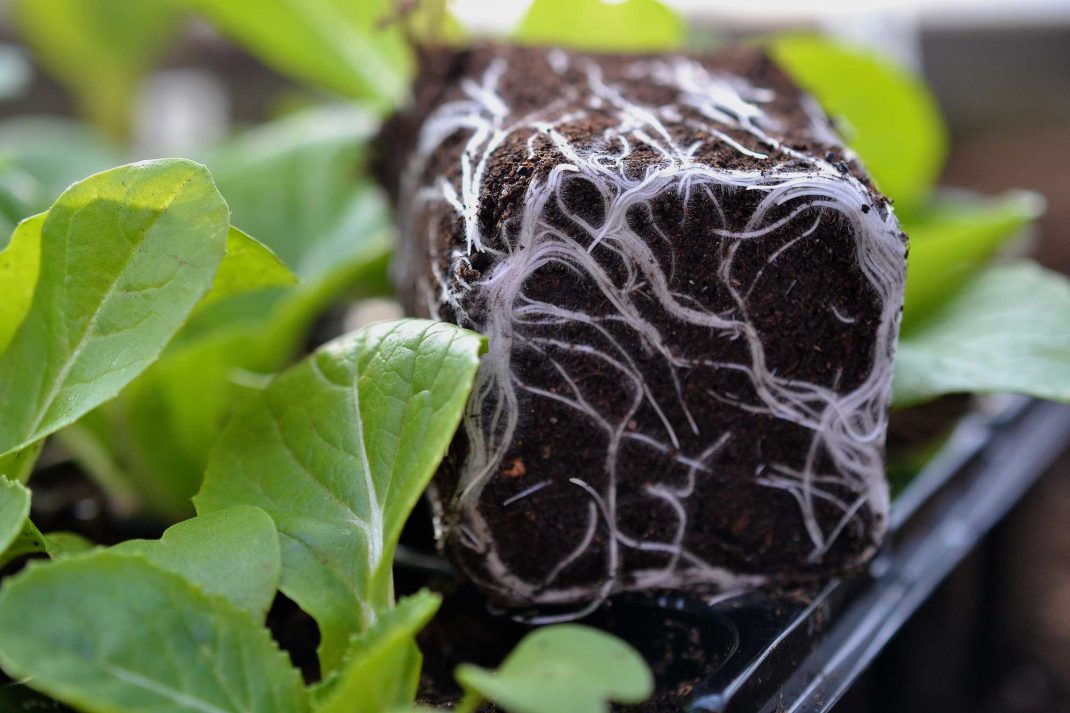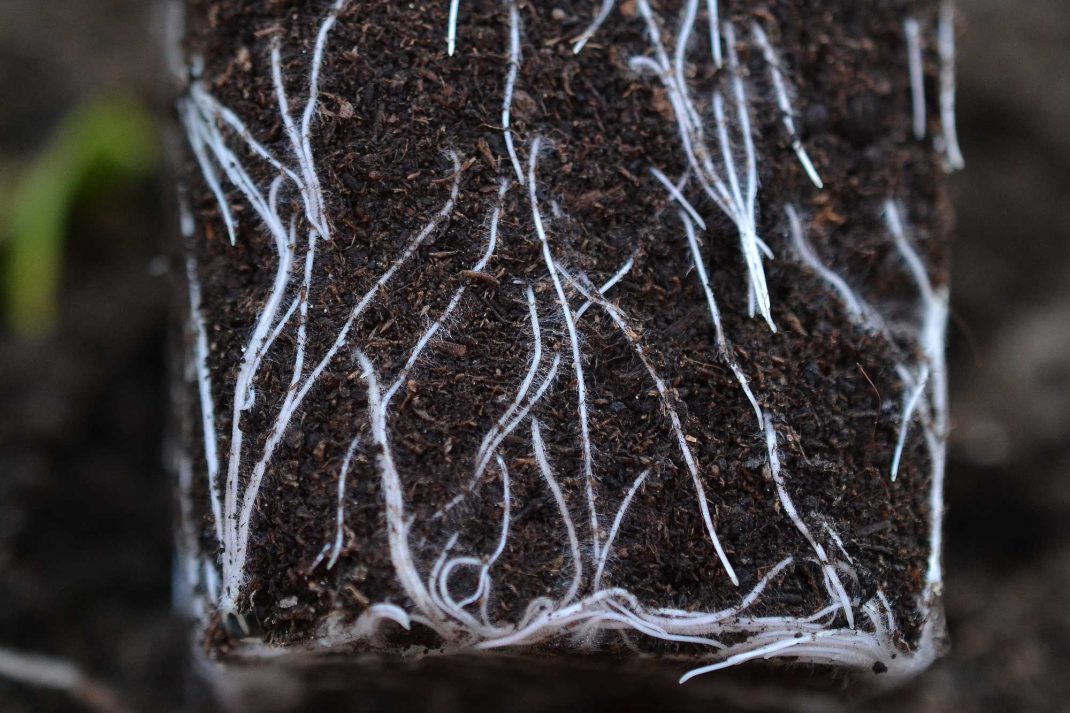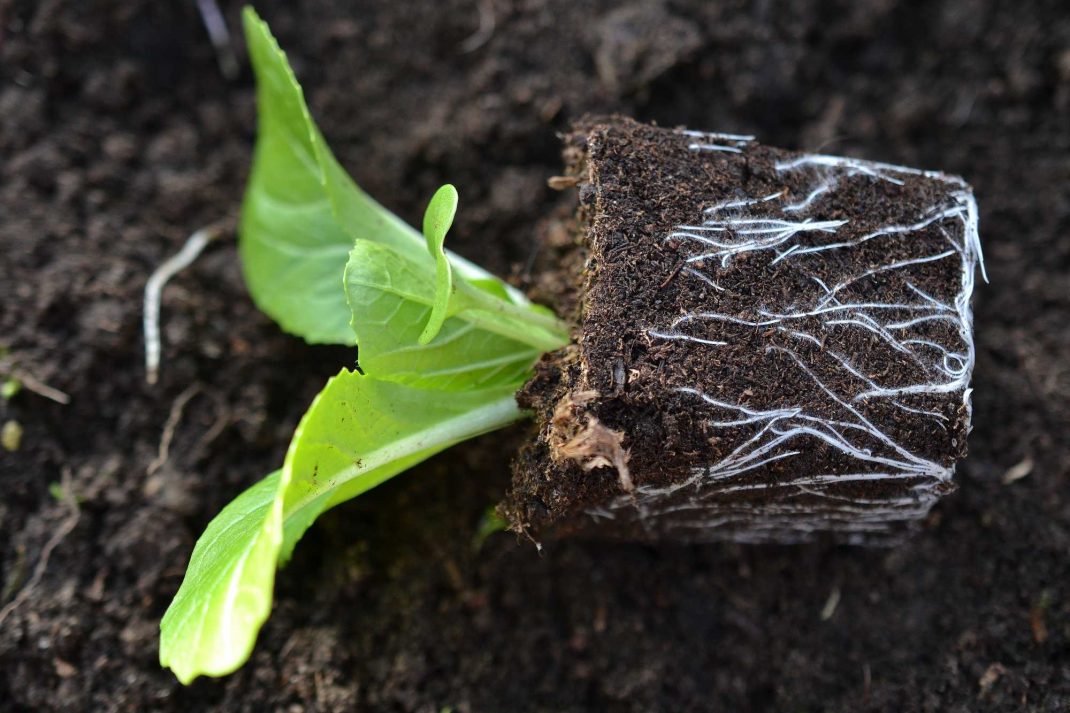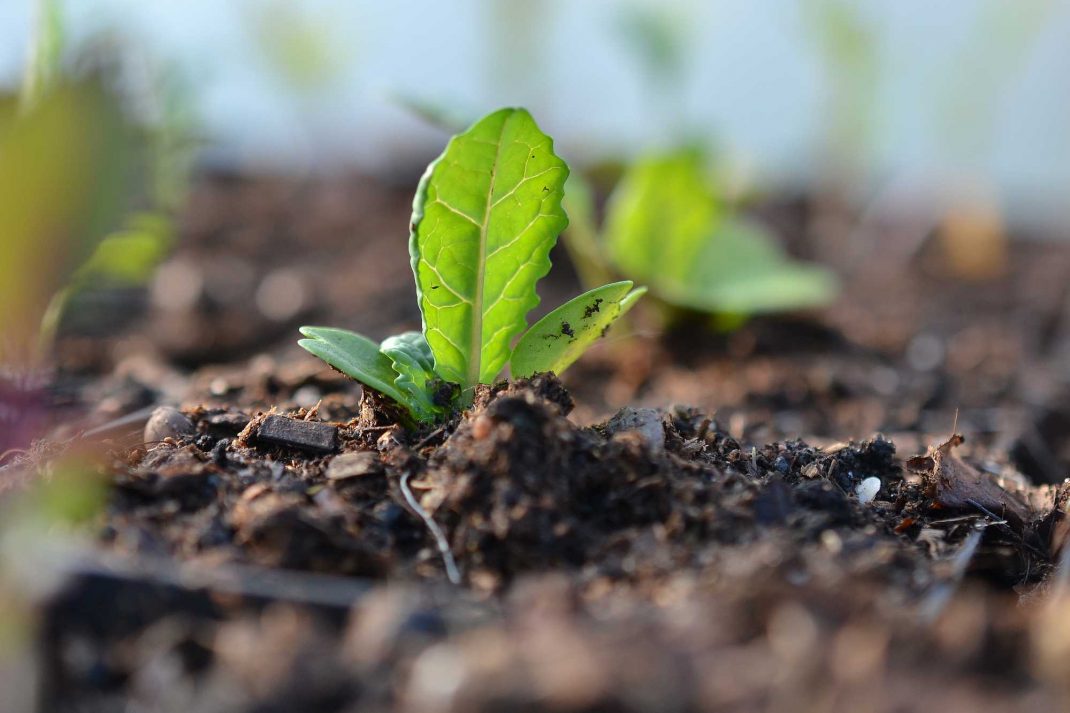How to get healthy roots
I just love seeing how healthy and vibrant the root systems of my plants often look. Healthy roots are the very foundation for getting good quality vegetables in the end, so make it a priority!

My napa cabbage looks really lovely, just look at those roots!
One of my readers commented that my plants seem to have really healthy roots. I thought this was really interesting and decided to write more about this subject.
Elin: "I have noticed that your plants have really nice root systems, for example, your cabbage, lettuce and your cuttings. My plants look healthy but with very few roots that break easily when I replant my plants. What is your secret?"
This was a first for me. I haven't really noticed that my plants have especially nice roots. But when I go through the pictures and clips from my blog, I have to say that they look pretty good. I can't give you a scientific explanation to why they look like this, but I'm happy to share my thoughts about it.
I think that the most important aspect is to choose the right time to sow, or manipulate the circumstances and give the plant what it needs, so it "believes" the time is right. The plant will grow healthy roots with the right amount of light, nutrients, water, and heat. The basics are just that, basic, but getting it right can still be tricky.

This is a good example of healthy roots. I replanted this plant only a week ago.
Airy soil
The soil is really important. I don't really have any favorites for sowing or replanting my vegetables, but I always try to feel the soil so I can tell if the texture is right. I sometimes use soil from old hotbeds or buy soil from the store.
Remember that the roots are very sensitive in the beginning. They need light and airy soil. Not too tightly packed around the plant.
The more soil around the plant, the bigger the risk that they suffocate when the soil gets heavy and moist. That's why I always make sure to use a minimal amount of soil for my sowings. Don't add more just because you think that it will save you some work later. I only sow in troughs with an inch or so of soil in the bottom. Or in plug trays that are large enough for each vegetable. When I replant them, I noticed that the roots have been able to push the soil away and spread out easily.

This is a napa plant growing in one of my kid's toys.
Small or large trough?
Cabbage, onion, radish, and beets can be sown in little pots or plug trays with just a little bit of soil. If you don't have any plug trays available, you could always put plenty of seeds in a pot or a small trough with just the right amount of soil. This is called broadcast seeding.
Cucurbits, corn, and beans grow really quickly. Their roots get quite large and that's why you should put them one by one in larger pots. I'm thinking pots that are around 2.5-4 inches (around 7-10 centimeters) in diameter.
Light and heat
A lot of things need to work out in order for the plant to grow healthy roots. We need enough light, the right temperature, a good amount of nutrients and of course water. I don't always get everything perfectly right but it usually works out anyway.
I always make sure to have some extra light if I sow when it's cold and dark outside. I grow plenty of things in my laundry room. The room is warm and the plants grow really nicely here in winter and early spring. But the plants would grow really leggy and weak without some extra light. When this happens, it doesn't matter if the plant starts off with healthy roots.
Nutrients
I sow most of my seeds in the polytunnel in spring. These plants grow hardy and adapt well to the changing temperatures, even when it's cold at night. It's also very important to make sure that the soil has enough nutrients. It's really easy to tell if this is not the case. The leaves become yellow, the plant really struggles and there doesn't seem to be a lot going on. If this is the case, try fertilizing your plants with some kind of liquid fertilizer like diluted urine or nettle water. This is a nice quick fix which will help the plant grow better both above and below the soil surface.
Deciding when it's time to replant can be a bit tricky. This will of course also depend on how the roots look and how much they have developed. The time is right when the roots look healthy and have started to fill up the pot. It might be difficult to see this happen from above of course. I usually try to carefully remove the plant from the pot or trough just to see how it's doing.

It doesn't take long before this little recently replanted cabbage plant has filled up its 3-inch pot.
Pruning
Pruning might just be my favorite replanting tip. After all, the more leaves the plant needs to provide for, the more energy it spends. I usually cut onions grown from seed a few times before I plant them outside. Cuttings from for example berry bushes, tomatoes, and cucumber get trimmed simply by removing half of the leaf. And then I make sure that they are just the right length, around 6-8 inches (15-20 centimeters) in a deep pot, instead of going for really long cuttings.
Summary
- Go for airy soil.
- Pick a small pot or trough so that the plant doesn't get smothered by soil.
- Sow when the plant can get all the heat and light it needs, or use a grow light and heat mat if it's winter and cold indoors.
- Replant in a slightly bigger pot, don't go for the largest one immediately.
- Fertilize and water regularly so that the plant grows at an even pace.
Getting the right results in your garden takes some practice. My experience is that most of the spring sowings except for the ones that require a lot of heat (tomato, cucurbits, bell peppers, chili, eggplant) grow a lot better in greenhouses or polytunnels than in room temperature with a grow light. Vegetables are in many ways a lot hardier than we think!
Good luck getting healthy roots!
/Sara Bäckmo


